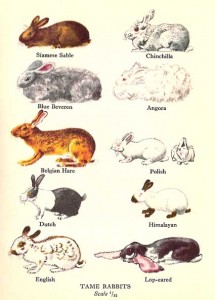Hanging around the library today, I happened to pick up the March 2009 issue of Economic Botany, and was rewarded with a couple of really interesting papers on people’s perceptions of agrobiodiversity, and how it can be different to what you might think.
The first paper looked at knowledge of apple diversity among cider-makers in the United Kingdom and the United States. ((David Reedy, Will McClatchey, Clifford Smith, Y. Lau & K. Bridges (2009) A Mouthful of Diversity: Knowledge of Cider Apple Cultivars in the United Kingdom and Northwest United States. Economic Botany 63(1):2-15.)) The working hypothesis was that cider makers with a long history in the business would know more apple variety names that comparative neophytes. The results of semi-structured interviews with about 30 informants in Washington State, England, Wales and Northern Ireland suggested that this was not in fact the case. Experienced cider makers do indeed know more apple varieties, but not necessarily by name. They keep track of diversity in other ways, by taste, smell and ecology. The art of cider making lies in the blending, so the maker needs to know what each apple tastes like, on its own and in combination.
Cider makers who have a sense of rootedness to their land often know intricate details about trees in their orchards. They may know the rate at which they bloom, which trees do better in which conditions, or what the sugar levels of fruits will be on a given year. With all this knowledge, why would names have significance?
This would seem to contradict the findings of other studies which suggested that there’s a high degree of correspondence between number of local names and genetic diversity. Names might be lost, but the knowledge of diversity — and, at least for now, the diversity itself — is still there.
The second paper looks at how diversity in grapevines was perceived in the past. ((P. Gago, J. L. Santiago, S. Boso, V. Alonso-Villaverde & M. C. Martinez (2009) Grapevine (Vitis vinifera L.): Old Varieties are Reflected in Works of Art. Economic Botany 63(1):67-77. 10.1007/s12231-008-9059-y.)) Its subject is the Baroque altarpieces in Galicia, and in particular the twisted columns known as Solomonic. These often feature grapevine leaves, and the authors measured various morphometric variables on these representations, as well as on the real leaves of numerous varieties maintained in a local genebank. You know the kind of thing. The angle between this and that vein. The depth of the nth lobe.
They found that the representations were often very faithful, and could be used to identify specific local varieties. With a more extensive dataset (that is, more characters, and more altarpieces), it might be possible to reconstruct the history of cultivation of various now rare or extinct local cultivars. Another example of the imaginative sources of data people are looking at to get a handle on genetic erosion.
